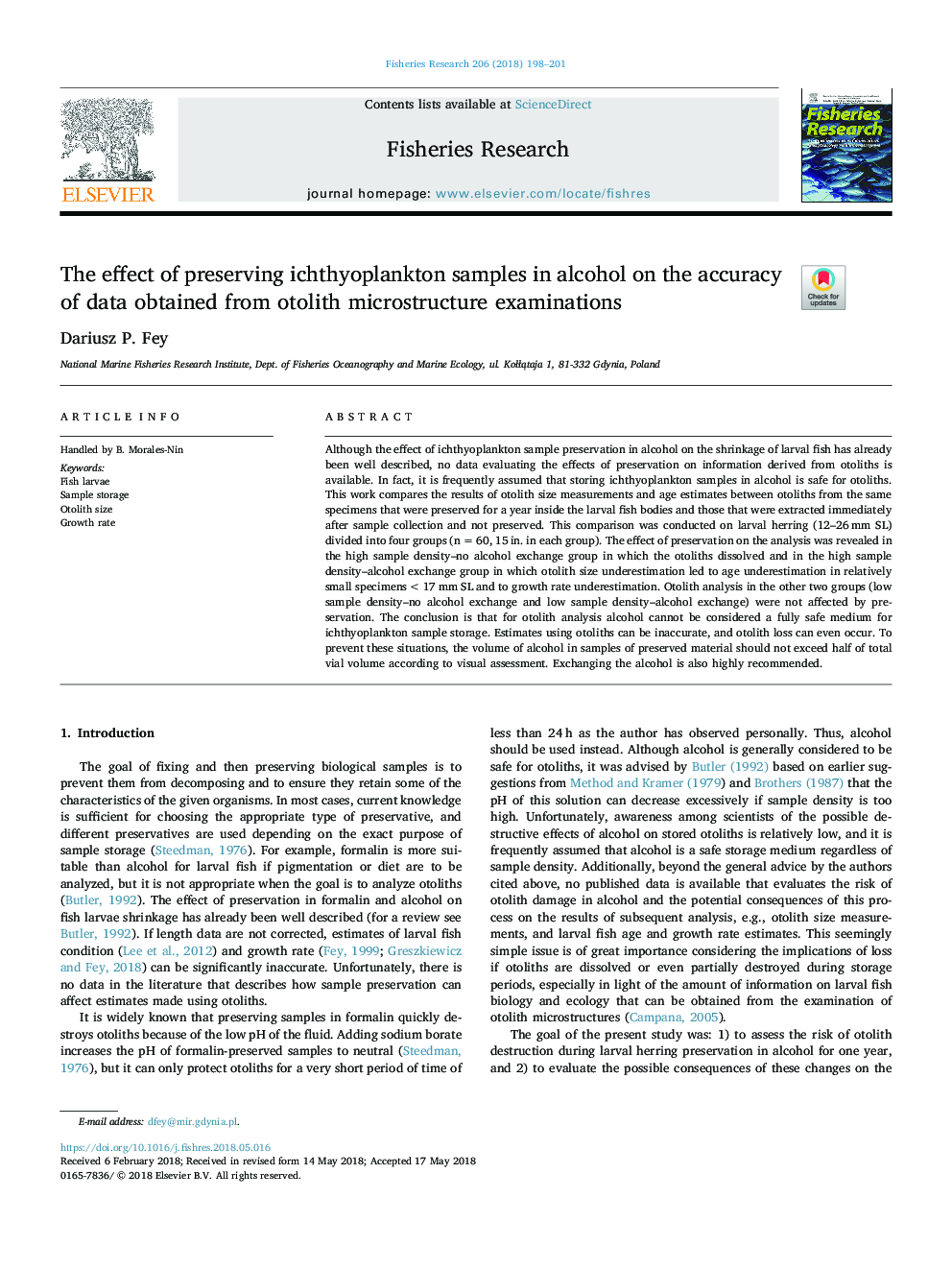| Article ID | Journal | Published Year | Pages | File Type |
|---|---|---|---|---|
| 8885287 | Fisheries Research | 2018 | 4 Pages |
Abstract
Although the effect of ichthyoplankton sample preservation in alcohol on the shrinkage of larval fish has already been well described, no data evaluating the effects of preservation on information derived from otoliths is available. In fact, it is frequently assumed that storing ichthyoplankton samples in alcohol is safe for otoliths. This work compares the results of otolith size measurements and age estimates between otoliths from the same specimens that were preserved for a year inside the larval fish bodies and those that were extracted immediately after sample collection and not preserved. This comparison was conducted on larval herring (12-26â¯mm SL) divided into four groups (nâ¯=â¯60, 15â¯in. in each group). The effect of preservation on the analysis was revealed in the high sample density-no alcohol exchange group in which the otoliths dissolved and in the high sample density-alcohol exchange group in which otolith size underestimation led to age underestimation in relatively small specimens <17â¯mm SL and to growth rate underestimation. Otolith analysis in the other two groups (low sample density-no alcohol exchange and low sample density-alcohol exchange) were not affected by preservation. The conclusion is that for otolith analysis alcohol cannot be considered a fully safe medium for ichthyoplankton sample storage. Estimates using otoliths can be inaccurate, and otolith loss can even occur. To prevent these situations, the volume of alcohol in samples of preserved material should not exceed half of total vial volume according to visual assessment. Exchanging the alcohol is also highly recommended.
Keywords
Related Topics
Life Sciences
Agricultural and Biological Sciences
Aquatic Science
Authors
Dariusz P. Fey,
